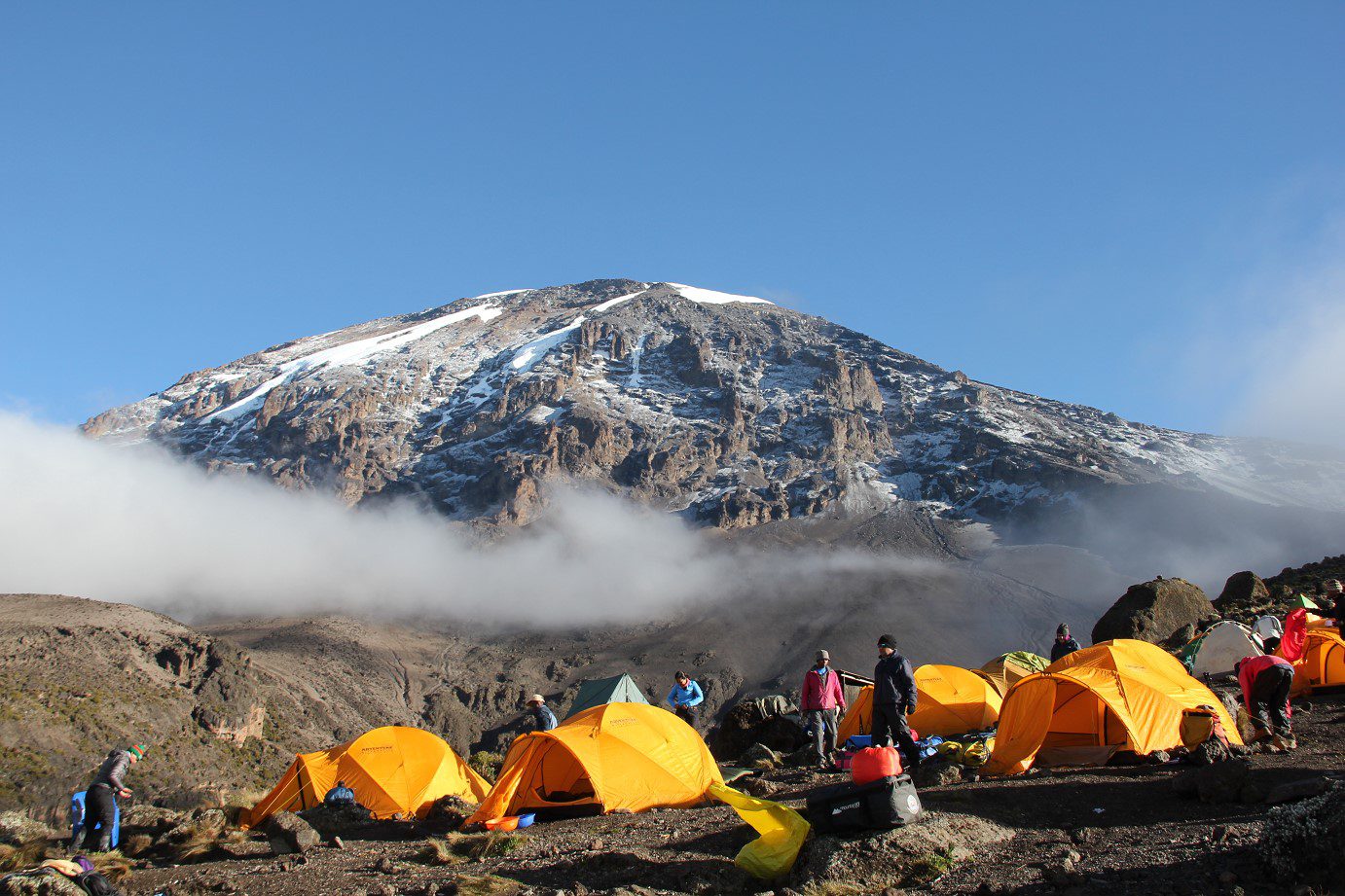Mount Kilimanjaro, standing majestically at 5,895 meters (19,341 feet) above sea level, dominates the East African landscape as the continent's highest peak and the world's tallest free-standing mountain. For those planning to climb Kilimanjaro, understanding the available Kilimanjaro routes is essential for a successful summit attempt. This iconic stratovolcano offers seven distinct Kilimanjaro routes to its summit at Uhuru Peak, each presenting unique challenges, breathtaking scenery, and unforgettable experiences that attract adventurers from around the globe.
Table of Contents
- Kilimanjaro Official Routes
- 1. Marangu Route (Coca-Cola Route)
- 2. Machame Route (Whiskey Route)
- 3. Lemosho Route
- 4. Rongai Route
- 5. Northern Circuit Route
- 6. Shira Route
- 7. Umbwe Route
- Factors to Consider Choosing the Route
- Best Times to Climb
- Essential Preparation Tips
- Conclusion
- Planning Your Kilimanjaro Adventure
Choosing the best Kilimanjaro routes can make the difference between summit success and disappointment when you climb Kilimanjaro. From the popular Machame Route's diverse ecosystems to the remote Northern Circuit's pristine wilderness, every path tells a different story of Africa's rooftop. Whether you're seeking luxury camping experiences, challenging technical climbs, or budget-friendly options, selecting the best route among all Kilimanjaro routes is crucial for your climb Kilimanjaro adventure. This comprehensive guide analyzes each route's difficulty level, success rates, costs, and scenic highlights to help you make an informed decision for your once-in-a-lifetime journey to climb Kilimanjaro.
Kilimanjaro Official Routes
The Official Kilimanjaro routes are carefully regulated paths established by the Tanzania National Parks Authority to ensure climber safety and environmental protection. These seven designated Kilimanjaro routes each offer distinct experiences, from beginner-friendly options to challenging technical climbs that test even experienced mountaineers.
Understanding the differences between Official Kilimanjaro routes is crucial for planning your expedition. Each of these Kilimanjaro routes varies significantly in duration, difficulty level, success rates, and scenic beauty, making proper route selection essential for achieving your summit goals.
Quick Route Comparison Table
| Route Name | Duration | Difficulty | Scenery | Traffic | Success Rate |
|---|---|---|---|---|---|
| 1. Marangu | 5–6 days | Moderate | Fair | High | Low–Medium |
| 2. Machame | 6–7 days | Challenging | Excellent | High | High |
| 3. Lemosho | 7–8 days | Moderate–Hard | Excellent | Medium | Very High |
| 4. Rongai | 6–7 days | Moderate | Good | Low | Medium–High |
| 5 Northern Circuit | 8–9 days | Moderate | Exceptional | Very Low | Very High |
| 6. Shira | 7 days | Hard | Excellent | Low | Medium |
| 7. Umbwe | 5–6 days | Very Hard | Scenic | Very Low | Very Low |
1. Marangu Route (Coca-Cola Route)
The Marangu route is unique and the most popular route among Kilimanjaro trekking options, offering hut accommodation instead of camping. While many consider this Marangu Route as Kilimanjaro best route for comfort, experienced Kilimanjaro climbers note Marangu route for its poor acclimatization profile, which reduces summit success rates significantly.
Duration: 5-6 days
Difficulty: Moderate
Success Rate: 70%
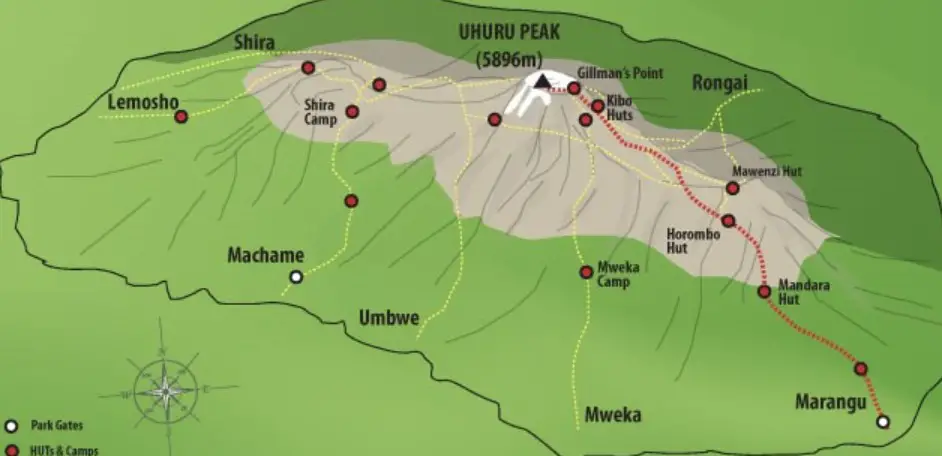
Why "Coca-Cola Route"?
The Marangu Route earned the nickname "Coca-Cola Route" because:
- It's considered the most commercialized and "comfortable" route
- The huts along the way historically sold Coca-Cola and other refreshments
- It's often marketed as the "easy" option, similar to how Coca-Cola is an easy, accessible drink
- This contrasts with the Machame Route's nickname "Whiskey Route" (implying it's more hardcore)
Unique Features of Marangu
Hut Accommodation:
- Only route with sleeping huts instead of camping
- Mandara Hut (2,700m), Horombo Hut (3,720m), and Kibo Hut (4,703m)
- Huts have bunk beds with mattresses (you still need a sleeping bag)
- Basic dining halls and toilet facilities
- Shared accommodation with other climbers
The "Easier" Perception Problem: Many people choose Marangu thinking it's easier because:
- No need to carry camping gear
- Sleeping in beds instead of tents
- Shorter duration (5-6 days vs 6-8 for other routes)
- Less physical gear required
Why the Success Rate is Actually Lower (70% vs 85-90% on other routes):
- Poor acclimatization: The route goes up and down the same path, providing less diverse altitude exposure
- Too fast ascent: 5-6 days doesn't allow enough time for your body to adjust to altitude
- Same path up and down: No "climb high, sleep low" benefit that other routes provide
- False confidence: People underestimate the challenge and don't prepare adequately
The Route Profile
- Day 1: Marangu Gate to Mandara Hut (2,700m) - rainforest zone
- Day 2: Mandara to Horombo Hut (3,720m) - moorland zone
- Day 3: Rest day at Horombo (optional but recommended)
- Day 4: Horombo to Kibo Hut (4,703m) - alpine desert
- Day 5: Summit attempt and descent to Horombo
- Day 6: Horombo to Marangu Gate
Who Should Consider Marangu?
Good for:
- Those uncomfortable with camping
- Climbers with limited gear
- People who prefer more social atmosphere (shared huts)
- Those with mobility issues that make tent camping difficult
Not ideal for:
- First-time high-altitude climbers (due to lower success rates)
- Those prioritizing summit success over comfort
- People seeking pristine wilderness experience
- Climbers wanting varied scenery (same path up and down)
Pros:
- Hut accommodation with beds and basic meals
- Less gear required
- Shorter duration
- Good for those uncomfortable with camping
Cons:
- Lower success rate
- Poor acclimatization profile
- Can be crowded
- Less scenic variety

The only route offering hut accommodation, Marangu route is often perceived as "easier" but has a lower success rate due to its shorter duration and poor acclimatization profile.
The key takeaway is that while Marangu offers more comfortable sleeping arrangements, this doesn't translate to an easier climb or higher success rate. The mountain's altitude challenge remains the same regardless of where you sleep!
2. Machame Route (Whiskey Route)
The Machame Route is the most popular choice for good reason. This scenic route offers diverse landscapes, from lush rainforest to alpine desert, and provides excellent acclimatization opportunities with its "climb high, sleep low" profile.
Duration: 6-7 days
Difficulty: Moderate to Challenging
Success Rate: 85%
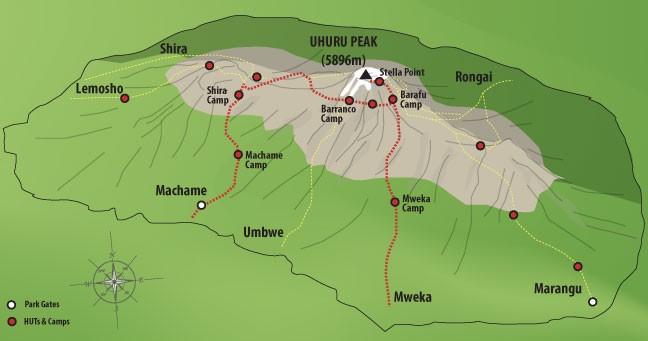
Why "Whiskey Route"?
The Machame Route earned the nickname "Whiskey Route" because:
- It's considered more challenging and "hardcore" than the Marangu ("Coca-Cola") Route
- Like whiskey vs. Coca-Cola, it's seen as the "stronger" option
- It requires more grit, determination, and physical fitness
- The camping experience is more rugged and adventurous
What Makes Machame So Popular?
Scenic Diversity:
- Day 1: Lush rainforest with colobus monkeys and exotic birds
- Day 2: Moorland with giant heather and stunning views
- Day 3: Alpine desert with dramatic rock formations
- Day 4: Glacial valleys and the famous Barranco Wall
- Day 5-6: Arctic conditions near the summit
The "Climb High, Sleep Low" Profile: This is crucial for acclimatization:
- You climb to higher altitudes during the day
- Then descend to sleep at lower elevations
- This helps your body gradually adapt to reduced oxygen
- Example: Climb to Lava Tower (4,630m) then sleep at Barranco (3,960m)
Detailed Route Breakdown
Day 1: Machame Gate (1,640m) to Machame Camp (2,835m)
- 5-7 hours through dense rainforest
- Often muddy and slippery
- First taste of "pole pole" (slowly slowly)
Day 2: Machame Camp to Shira Camp (3,750m)
- 4-6 hours ascending through moorland
- Spectacular views of Mount Meru
- Landscape becomes more sparse and dramatic
Day 3: Shira Camp to Lava Tower (4,630m) to Barranco Camp (3,960m)
- The crucial acclimatization day
- Climb high to Lava Tower, then descend
- Many people feel altitude effects here
- End at beautiful Barranco Camp with Barranco Wall looming
Day 4: Barranco Camp to Karanga Camp (3,995m)
- Tackle the famous Barranco Wall (scrambling, not technical climbing)
- Stunning views of glaciers and summit
- Shorter day to rest before summit attempt
Day 5: Karanga to Barafu Camp (4,673m)
- Final base camp before summit
- Barren, rocky landscape
- Early dinner and sleep before midnight summit attempt
Day 6: Summit Day - Barafu to Uhuru Peak (5,895m) to Mweka Camp
- Start around midnight
- 6-8 hours to summit
- Then 6-8 hours descent to Mweka Camp
- Longest and most challenging day
Day 7: Mweka Camp to Mweka Gate
- Final descent through rainforest
- Certificate ceremony at the gate
Why 85% Success Rate?
Good Acclimatization:
- The route profile naturally helps your body adjust
- Multiple climate zones allow gradual adaptation
- Rest stops at optimal elevations
Adequate Duration:
- 6-7 days provides sufficient time for altitude adjustment
- Not rushed like Marangu's 5-day schedule
Well-Established Infrastructure:
- Clear paths and established campsites
- Experienced guides familiar with the route
- Good rescue access points
The Challenges
Physical Demands:
- Steep sections require good fitness
- Barranco Wall scrambling can be intimidating
- Long summit day tests endurance
Weather Exposure:
- Camping in potentially harsh conditions
- Rain in forest zones, cold at high altitude
- Wind exposure on ridges
Crowds:
- Most popular route means busy campsites
- Less solitude, especially during peak season
- Potential for overcrowding at key points
Who Should Choose Machame?
Ideal for:
- First-time Kilimanjaro climbers with good fitness
- Those wanting diverse scenery and experiences
- Climbers prioritizing success rate over comfort
- People comfortable with camping
Consider alternatives if:
- You have limited time (under 6 days)
- You prefer hut accommodation
- You want to avoid crowds
- You're not comfortable with camping in harsh conditions
Pros:
- Stunning scenery and varied ecosystems
- Good acclimatization profile
- High success rate
- Well-maintained campsites
Cons:
- Can be crowded, especially during peak season
- Steep sections require good fitness
- Camping only (no hut accommodation)
Best for: First-time climbers seeking a balance of challenge and success rate
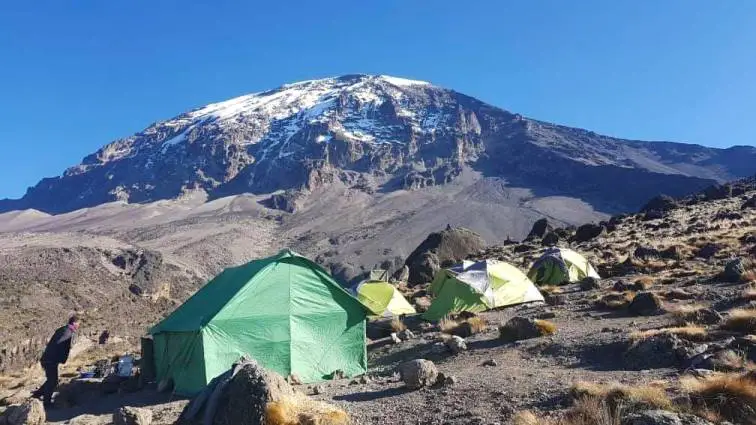
The Machame Route strikes an excellent balance between challenge and achievability, which explains why it's often recommended as the "best overall" route for most climbers. The varied scenery keeps it interesting, while the good acclimatization profile maximizes your chances of reaching the summit!
3. Lemosho Route
The Lemosho Route is widely considered the most scenic Kilimanjaro path. This premium Lemosho Route approaches from the remote west, delivering spectacular panoramic views and pristine wilderness with significantly fewer crowds during initial days.
Duration: 7-8 days
Difficulty: Moderate
Success Rate: 90%
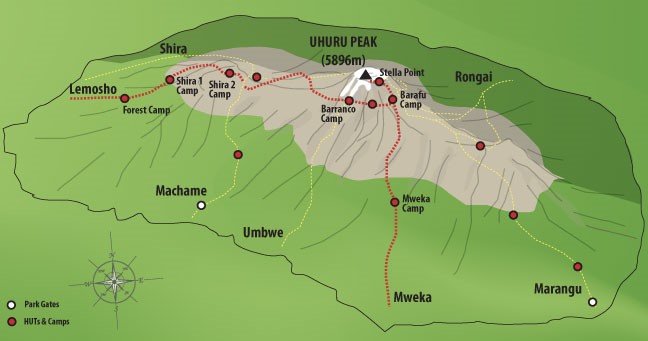
Why Lemosho is Considered Premium
The Most Scenic Route:
- Approaches from the remote western side of the mountain
- Crosses the entire Shira Plateau - a massive volcanic caldera
- Offers 360-degree views of the mountain and surrounding landscape
- Less disturbed ecosystems with more wildlife opportunities
- Pristine wilderness experience, especially in early days
The "Lemosho Advantage":
- Longest approach allows for the best acclimatization
- Fewer crowds initially (though it joins Machame route later)
- Higher success rate (90%) due to optimal pacing
- More expensive but often considered worth the investment
Detailed Route Breakdown
Day 1: Londorossi Gate (2,100m) to Big Tree Camp (2,780m)
- 4WD drive to remote starting point
- Walk through pristine montane forest
- High chance of seeing wildlife (monkeys, birds, small antelope)
- Much quieter than other routes' first days
Day 2: Big Tree Camp to Shira 1 Camp (3,500m)
- Emerge from forest onto the famous Shira Plateau
- First spectacular mountain views
- Ancient volcanic landscape - you're walking on a collapsed caldera
- Weather can change quickly here
Day 3: Shira 1 to Shira 2 Camp (3,850m)
- Cross the entire Shira Plateau
- Incredible panoramic views of Mount Meru and the Great Rift Valley
- Acclimatization walk to higher elevations
- Photography paradise
Day 4: Shira 2 to Lava Tower (4,630m) to Barranco Camp (3,960m)
- The crucial "climb high, sleep low" day
- Same as Machame route from this point
- Lava Tower is a key acclimatization marker
- Many climbers feel altitude effects here
Days 5-8: Follows Machame Route
- Barranco Wall scramble
- Summit via Barafu Camp
- Same challenging final approach as Machame
Why 90% Success Rate?
Superior Acclimatization:
- 7-8 days allows body more time to adapt
- Gradual altitude gain in first few days
- Shira Plateau provides perfect intermediate altitude
- Less rushed schedule reduces altitude sickness risk
Better Physical Preparation:
- Longer route builds fitness gradually
- More rest opportunities before summit push
- Better sleep quality in less crowded early camps
The Costs and Logistics
Why More Expensive:
- Longer duration = more park fees, guide wages, food
- Remote starting point requires 4WD transport
- Less infrastructure initially = higher operational costs
- Premium positioning by tour operators
Logistical Considerations:
- Longer drive to Londorossi Gate (3+ hours from Moshi)
- Weather-dependent road access
- More gear needed for longer expedition
- Requires more time off work/vacation days
Unique Features
The Shira Plateau Experience:
- Walking across an ancient volcanic plateau
- 360-degree mountain views
- Unique geological formations
- Sense of isolation and wilderness
Wildlife Opportunities:
- Better chances of seeing larger mammals
- Blue monkeys, colobus monkeys
- Diverse bird species
- Less human disturbance in early sections
Photography Paradise:
- Best lighting conditions for mountain photography
- Varied landscapes from forest to alpine desert
- Fewer people in your shots initially
- Classic Kilimanjaro poster shots
Who Should Choose Lemosho?
Perfect for:
- Those wanting the highest success rate
- Photographers seeking pristine shots
- Climbers with 7-8 days available
- People willing to pay premium for best experience
- Those seeking wilderness and fewer crowds
Pros:
- Pristine wilderness experience
- Excellent acclimatization
- Highest success rate
- Less crowded in early stages
Cons:
- More expensive due to longer duration
- Requires good physical fitness
- Remote starting point
Best for: Those seeking the highest success rate and premium experience
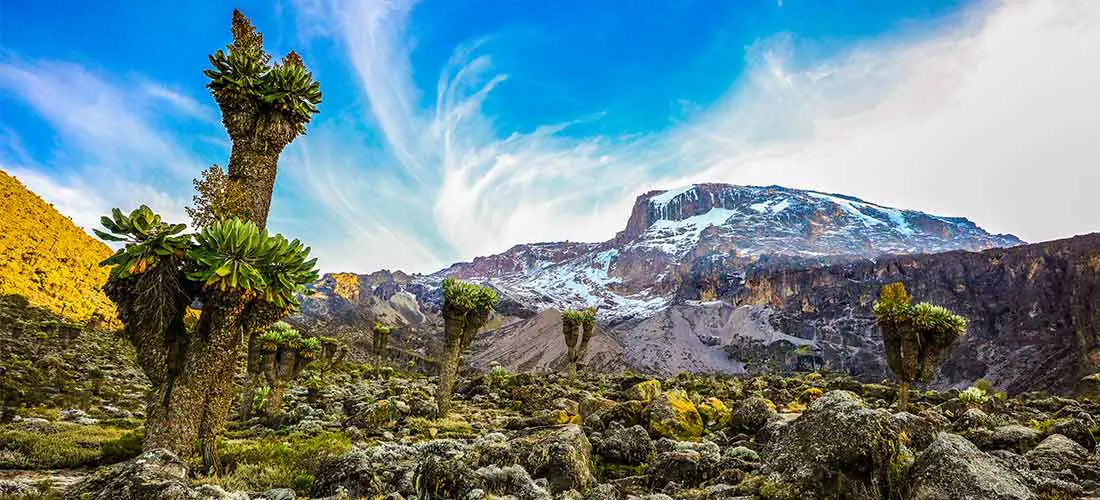
The Lemosho Route is often recommended for those who want to maximize their chances of summit success while experiencing the most diverse and pristine aspects of Kilimanjaro. It's the route many guides privately choose for their own climbs, which speaks volumes about its quality!
4. Rongai Route
The Rongai route approaches from Kenya's border, making it unique among options to climb Kilimanjaro. This best Kilimanjaro route for solitude ascends the northern face and descends via Marangu, offering distinctive dual perspectives and gentler gradients throughout the journey.
Duration: 6-7 days
Difficulty: Moderate
Success Rate: 80%
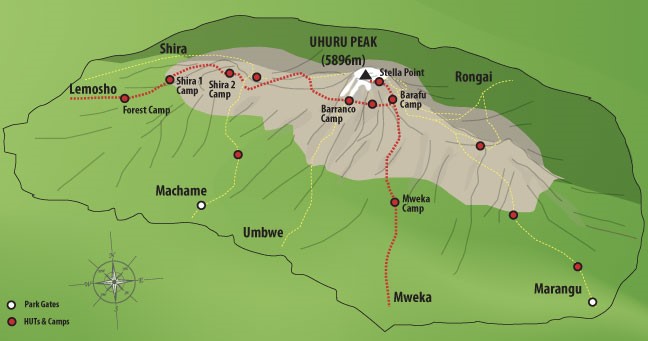
What Makes Rongai Unique?
The Only "Up One Side, Down Another" Route:
- Ascends via the northern face (from Kenya border)
- Descends via the southern Marangu route
- This gives you two completely different mountain perspectives
- You see both the "dry side" (north) and "wet side" (south) of Kilimanjaro
Northern Approach Advantages:
- Drier climate - less rainfall on the north side
- Different ecosystem and vegetation
- Views into Kenya and the Great Rift Valley
- Less crowded, especially in early days
- Different wildlife and bird species
Detailed Route Breakdown
Day 1: Nalemuru Gate (2,020m) to Simba Camp (2,625m)
- Start at Kenya border area
- Gentler ascent through farmland and pine forest
- Drier conditions than southern routes
- Good acclimatization start
Day 2: Simba Camp to Second Cave (3,450m)
- Continue through moorland
- Spectacular views of Kibo peak
- Gentler gradient than most routes
- Less vegetation as you gain altitude
Day 3: Second Cave to Kikelewa Camp (3,600m)
- Short day for acclimatization
- Views of glaciers become prominent
- Landscape becomes more barren
- Good rest before challenging days ahead
Day 4: Kikelewa Camp to Mawenzi Tarn (4,330m)
- Dramatic change in scenery
- Views of Mawenzi peak (Kilimanjaro's second highest point)
- Alpine desert conditions
- Spectacular but challenging terrain
Day 5: Mawenzi Tarn to Kibo Hut (4,703m)
- Cross the saddle between Mawenzi and Kibo peaks
- Join the Marangu route
- Prepare for summit attempt
- Barren, rocky landscape
Day 6: Summit Day - Kibo Hut to Uhuru Peak to Horombo Hut
- Same summit approach as Marangu route
- Midnight start for summit attempt
- Descend via different route (Marangu path)
- Experience southern face vegetation
Day 7: Horombo Hut to Marangu Gate
- Final descent through lush rainforest
- Completely different ecosystem from ascent
- Certificate ceremony at gate
Why Choose Rongai?
Gentler Gradients:
- Most gradual ascent profile of all routes
- Less steep sections than Machame or Lemosho
- Good for those concerned about fitness levels
- Easier on knees and joints
Weather Advantages:
- Northern face receives less rainfall
- Better weather odds during shoulder seasons
- Less muddy conditions in forest zones
- Clearer mountain views more often
Solitude and Wilderness:
- Fewest climbers, especially initially
- More wildlife viewing opportunities
- Peaceful camping experience
- Less commercial feel
Unique Perspectives:
- Only route showing both sides of the mountain
- Different geological features
- Views into Kenya vs. Tanzania
- Varied ecosystems from dry to lush
The Challenges
Less Scenic Initially:
- Northern face is drier and less lush
- Not as dramatically beautiful as western routes
- More barren landscape earlier on
- Less varied vegetation zones
Logistical Issues:
- Longer drive to starting point
- More remote location
- Limited water sources on route
- Less infrastructure than popular routes
Acclimatization Concerns:
- While gentler, still requires careful pacing
- Some climbers find it "too easy" initially
- Need to respect altitude despite easier walking
- Success rate lower than Lemosho/Northern Circuit
Who Should Choose Rongai?
Perfect for:
- Climbers seeking solitude and fewer crowds
- Those preferring gentler, more gradual ascents
- People wanting to see both sides of the mountain
- Climbers concerned about weather/rain
- Those interested in Kenya-Tanzania border experience
Consider alternatives if:
- Scenic beauty is top priority
- You prefer more challenging, dramatic routes
- Budget is tight (can be more expensive due to logistics)
- You want the highest possible success rates
Pros:
- Less crowded
- Gentler gradient
- Good for acclimatization
- Views of both Kenya and Tanzania
Cons:
- Less scenic than western routes
- Limited water sources
- Longer drive to starting point
Best for: Those seeking solitude and gentler gradients
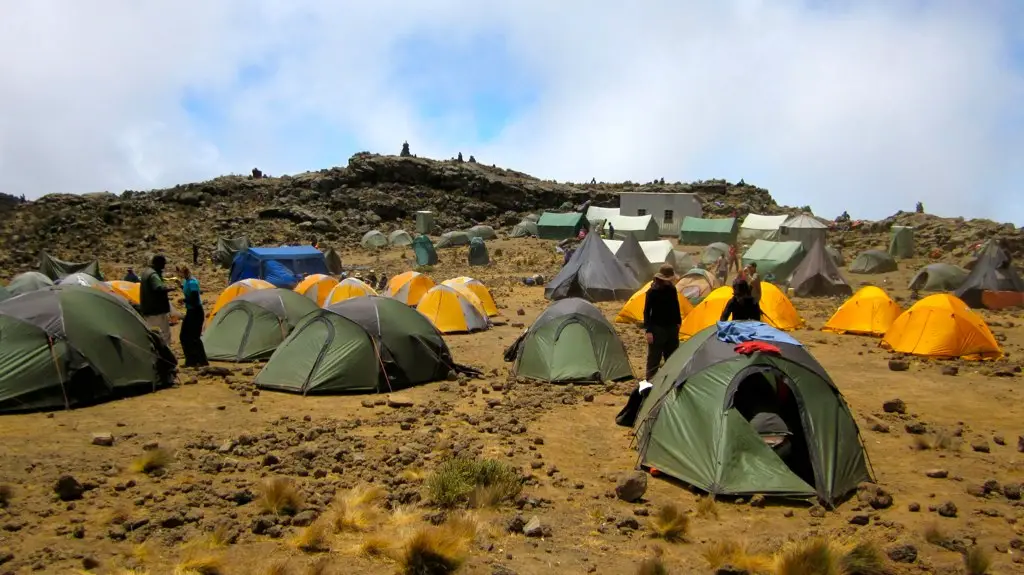
The Rongai Route offers a truly unique Kilimanjaro experience - it's like climbing two different mountains! While it may not be the most scenic or have the highest success rates, it provides an authentic wilderness experience with the special bonus of seeing Kilimanjaro from both its dry northern and lush southern perspectives.
5. Northern Circuit Route
The Northern Circuit is the best Kilimanjaro route for success rates, offering 95% summit achievement through superior acclimatization. This newest Kilimanjaro trekking path spans nine days, traversing almost the entire mountain for the ultimate climb Kilimanjaro experience with unmatched wilderness solitude.
Duration: 9 days
Difficulty: Moderate
Success Rate: 95%
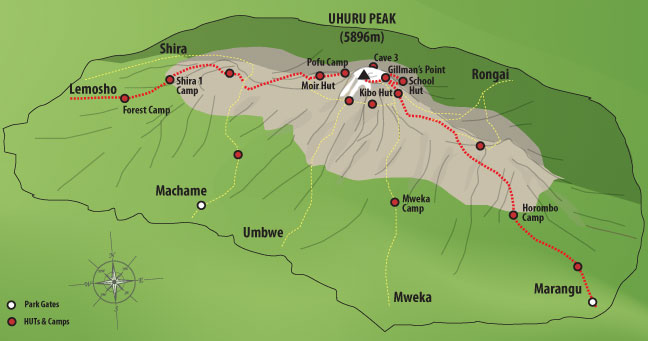
What Makes Northern Circuit Special?
The "Grand Tour" of Kilimanjaro:
- Longest route at 9 days, circumnavigating almost the entire mountain
- Newest official route (established in the 2000s)
- 95% success rate - the highest of all routes
- Most comprehensive mountain experience possible
- Often called the "luxury" option due to time and cost
Why 95% Success Rate?
- Superior acclimatization: 9 days allows your body maximum time to adapt
- Gradual altitude gain: Most gentle ascent profile
- Multiple acclimatization opportunities: Several "climb high, sleep low" days
- Less rushed: No pressure to move quickly
- Better rest: More sleep opportunities before summit attempt
Detailed Route Breakdown
Day 1: Londorossi Gate (2,100m) to Big Tree Camp (2,780m)
- Same start as Lemosho route
- Drive to remote western gate
- Walk through pristine montane forest
- Wildlife viewing opportunities
Day 2: Big Tree Camp to Shira 1 Camp (3,500m)
- Emerge onto the famous Shira Plateau
- First spectacular mountain views
- Ancient volcanic landscape
- Weather transition zone
Day 3: Shira 1 to Moir Hut (4,200m)
- Continue across Shira Plateau
- Higher altitude camp than other routes
- Excellent acclimatization opportunity
- 360-degree mountain views
Day 4: Moir Hut to Buffalo Camp (4,020m)
- First part of northern traverse
- Remote wilderness section
- Rarely visited area of the mountain
- Stunning isolation and pristine environment
Day 5: Buffalo Camp to Third Cave (3,870m)
- Continue northern circuit
- Descent helps with acclimatization
- Different perspective of Mawenzi peak
- Complete solitude from other routes
Day 6: Third Cave to School Hut (4,750m)
- Final approach to summit base
- Highest base camp of all routes
- Short day to rest before summit
- Mental preparation for summit attempt
Day 7: Summit Day - School Hut to Uhuru Peak (5,895m) to Mweka Camp
- Earliest and shortest summit approach
- Less crowded summit experience
- Different descent route via Mweka
- Celebration at lower altitude
Day 8: Mweka Camp to Mweka Gate
- Final descent through rainforest
- Certificate ceremony
- Reflection on epic journey
The Northern Circuit Advantages
Unmatched Acclimatization:
- 9 days provides optimal altitude adjustment
- Multiple "climb high, sleep low" opportunities
- Gradual ascent minimizes altitude sickness
- Body fully adapted by summit day
Complete Mountain Experience:
- See all sides and aspects of Kilimanjaro
- Experience every climate zone multiple times
- Most comprehensive geological tour
- Different perspectives daily
Wilderness and Solitude:
- Least crowded route, especially days 4-6
- Pristine camping areas
- Wildlife viewing opportunities
- Authentic wilderness experience
Weather Advantages:
- Multiple weather patterns and microclimates
- Better odds of clear summit day
- Experience mountain's full weather diversity
- Less weather-dependent than shorter routes
The Investment Required
Time Commitment:
- 9 days on mountain
- Additional travel days
- Requires 2+ weeks total vacation
- Not suitable for rushed schedules
Financial Investment:
- Most expensive route due to length
- Higher park fees, guide wages, food costs
- Premium positioning by operators
- Typically 30-50% more than shorter routes
Physical Demands:
- Requires sustained fitness over 9 days
- More gear needed
- Mental endurance important
- Cumulative fatigue management
Unique Features
The Northern Traverse (Days 4-6):
- Rarely visited wilderness area
- Complete isolation from other routes
- Different geological features
- Pristine ecosystem
- True explorer feeling
Multiple Acclimatization Walks:
- Day hikes to higher elevations
- Return to lower camps for sleep
- Practice for summit conditions
- Build confidence gradually
Weather Pattern Diversity:
- Experience all mountain microclimates
- Learn mountain weather patterns
- Better summit day weather prediction
- Comprehensive mountain education
Who Should Choose Northern Circuit?
Perfect for:
- Those wanting highest success rate possible
- Climbers with 2+ weeks available
- People seeking ultimate mountain experience
- Those willing to invest in premium experience
- Photographers wanting comprehensive coverage
- Adventure travelers prioritizing quality over cost
Not suitable if:
- Limited time (less than 2 weeks total)
- Budget is primary concern
- Prefer shorter, more direct challenges
- Uncomfortable with extended wilderness camping
- Want quicker gratification
The longest and newest route, Northern Circuit offers the best acclimatization and highest success rate by traversing almost the entire mountain.
Pros:
- Highest success rate
- Excellent acclimatization
- Most comprehensive mountain experience
- Low crowds
Cons:
- Most expensive option
- Requires significant time commitment
- Physically demanding due to length
Best for: Those with ample time seeking the ultimate Kilimanjaro experience

The Northern Circuit isn't just a climb - it's a complete Kilimanjaro education. You'll understand the mountain intimately, experience its full character, and have the highest chance of standing on Africa's rooftop. For many, it's a once-in-a-lifetime investment that pays dividends in memories, photographs, and summit success.
If you have the time and budget, and want to maximize both your summit chances and mountain experience, Northern Circuit is simply unmatched. It's the route many professional guides choose for their own personal climbs!
6. Shira Route
The Shira route starts at 3,600m altitude, offering immediate access to the spectacular Shira Plateau. While some consider it a Kilimanjaro best route for experienced climbers, this high-altitude start creates significant acclimatization challenges and increases altitude sickness risks for most trekkers.
Duration: 6-7 days
Difficulty: Challenging
Success Rate: 75%
Starting at high altitude (3,600m), Shira offers quick access to the Shira Plateau but presents acclimatization challenges.

What Makes Shira Unique (and Problematic)
The High-Altitude Start Problem:
- Begins at 3,600m (11,800ft) - higher than most people have ever been
- Skips the gradual acclimatization of lower altitudes
- Your body hasn't had time to produce extra red blood cells
- Many climbers feel immediate altitude effects
- Violates the fundamental "start low, go slow" altitude rule
Why It Exists:
- Originally designed for climbers already acclimatized from other peaks
- Meant for experienced high-altitude mountaineers
- Saves time for those with altitude experience
- Direct access to the spectacular Shira Plateau
- Appeals to climbers wanting to "skip the boring forest section"
Detailed Route Breakdown
Day 1: Shira Gate (3,600m) to Shira 1 Camp (3,500m)
- 4WD vehicle drives you to starting point
- Actually descend slightly on first day
- Immediate spectacular plateau views
- Many climbers already feel altitude here
- Short walking day but high impact
Day 2: Shira 1 to Shira 2 Camp (3,850m)
- Cross the amazing Shira Plateau
- Ancient volcanic caldera landscape
- 360-degree mountain views
- Photography paradise
- Altitude effects often worsen
Day 3: Shira 2 to Lava Tower (4,630m) to Barranco Camp (3,960m)
- Crucial "climb high, sleep low" day
- Same as Lemosho and Machame routes from here
- Many climbers struggle more due to poor initial acclimatization
- Joins other routes, losing uniqueness
Days 4-7: Follows Machame/Lemosho Route
- Barranco Wall scramble
- Same camps and challenges as other western routes
- Summit via Barafu Camp
- Descent via Mweka route
The Acclimatization Challenge Explained
What Should Happen:
- Gradual ascent from 1,500-2,000m
- Body slowly adapts to decreasing oxygen
- Red blood cell production increases
- Breathing adjusts over days
What Actually Happens on Shira:
- Sudden exposure to 3,600m altitude
- Body unprepared for 40% less oxygen
- Immediate stress on cardiovascular system
- Higher risk of acute mountain sickness (AMS)
Common Symptoms Climbers Experience:
- Headaches from day one
- Nausea and loss of appetite
- Fatigue and weakness
- Sleep problems
- Dizziness
- Some require immediate descent
Why Some Climbers Choose Shira
Time Savings:
- Shorter overall route (6-7 days vs 8-9 for Northern Circuit)
- Skips "boring" forest hiking
- Direct access to alpine zones
- Appeals to time-constrained climbers
Scenic Access:
- Immediate spectacular views
- Quick access to Shira Plateau
- Photography opportunities from day one
- Dramatic landscapes immediately
Perceived Adventure:
- Appeals to "hardcore" climbers
- Challenge of high-altitude start
- Different experience from standard routes
- Bragging rights for difficulty
The Reality Check: Why Guides Often Discourage It
Lower Success Rates (75%):
- Poor initial acclimatization leads to problems later
- More climbers forced to descend early
- Summit day becomes much harder
- Recovery takes longer
Health Risks:
- Higher incidence of altitude sickness
- More medical evacuations required
- Dangerous for inexperienced climbers
- Can mask serious altitude problems
Guide Experience:
- Most experienced guides prefer other routes
- More stressful for guide teams
- Higher client management difficulties
- More potential emergencies
Who Might Consider Shira (Very Limited Cases)
Experienced High-Altitude Climbers:
- Those recently at 3,500m+ elevations
- Climbers with proven altitude tolerance
- Mountaineers with extensive experience
- Those acclimatized from recent climbs
NOT Suitable For:
- First-time high-altitude climbers (95% of climbers)
- Anyone living below 1,500m elevation
- Climbers with any altitude sensitivity history
- Those seeking highest success rates
Pros:
- Quick access to alpine zones
- Beautiful Shira Plateau scenery
- Less crowded
Cons:
- Poor initial acclimatization
- Requires 4WD vehicle access
- Higher altitude sickness risk
Best for: Experienced high-altitude climbers

The Shira Route is essentially a "shortened Lemosho with terrible acclimatization." Unless you're an experienced high-altitude climber already acclimatized, it's generally not recommended by guides, doctors, or mountain safety experts.
The scenic benefits (which you get on Lemosho anyway) don't justify the significantly increased health risks and lower success rates. It's one of those routes that looks good on paper but performs poorly in reality.
Most climbers who choose Shira would have a better, safer, and more successful experience on Lemosho or Northern Circuit. The few extra days of proper acclimatization make an enormous difference in both safety and summit success!
7. Umbwe Route
The Umbwe route is Kilimanjaro's steepest and most direct path, earning its reputation as the ultimate Kilimanjaro challenge. This demanding Kilimanjaro trekking option requires exceptional fitness and high-altitude experience. With poor acclimatization and technical sections, the Umbwe route offers only 60% success rates, making it suitable exclusively for very experienced climb Kilimanjaro adventurers seeking extreme difficulty.
Duration: 6-7 days
Difficulty: Very Challenging
Success Rate: 60%
The steepest and most direct route, Umbwe is recommended only for very experienced climbers.

What Makes Umbwe So Challenging?
The "Straight Up" Approach:
- Most direct line to the summit - no gentle zigzags
- Steepest gradient of all routes
- Shortest horizontal distance but brutal vertical ascent
- Like taking the elevator shaft instead of the stairs
- No mercy for poor fitness or inexperience
Why Only 60% Success Rate:
- Poorest acclimatization profile of all routes
- Rapid altitude gain causes severe altitude sickness
- Physical demands exceed most climbers' capabilities
- Mental challenge breaks many climbers' resolve
- Weather exposure with limited shelter options
Detailed Route Breakdown
Day 1: Umbwe Gate (1,640m) to Umbwe Cave Camp (2,850m)
- Immediate steep ascent through dense rainforest
- Gain 1,200m in one day (more than most routes' first two days)
- Muddy, slippery, and physically demanding
- Many climbers already struggle on day one
- No gradual warm-up period
Day 2: Umbwe Cave Camp to Barranco Camp (3,960m)
- Another massive altitude gain (1,100m)
- Emerge from forest onto exposed moorland
- Steep scrambling over rocks and roots
- Spectacular but punishing terrain
- Many climbers show altitude sickness symptoms
Day 3: Barranco Camp to Karanga Camp (3,995m)
- Tackle the famous Barranco Wall
- Technical scrambling (not climbing, but close)
- Joins other routes here - loses uniqueness
- Short day but technically demanding
- Recovery opportunity before summit push
Day 4: Karanga Camp to Barafu Camp (4,673m)
- Approach final base camp
- Barren, rocky, exposed terrain
- Prepare for midnight summit attempt
- Many climbers already exhausted
Day 5: Summit Day - Barafu to Uhuru Peak to Mweka Camp
- Same challenging summit route as Machame
- Climbers often more tired than other routes
- Higher failure rate due to poor preparation
- Descent via Mweka route
Day 6: Mweka Camp to Mweka Gate
- Final forest descent
- Certificate ceremony (if you made it)
The Physical Demands
Cardiovascular Requirements:
- Exceptional aerobic fitness required
- Heart rate stays elevated for hours
- Limited recovery time between efforts
- Altitude compounds cardiovascular stress
Leg Strength and Endurance:
- Constant steep climbing
- No flat sections for recovery
- Quads and calves under extreme stress
- Many climbers experience severe muscle fatigue
Technical Skills:
- Rock scrambling ability
- Good balance and coordination
- Comfortable with exposure
- Ability to move efficiently on steep terrain
The Acclimatization Problem
What Proper Acclimatization Requires:
- Gradual altitude gain (300-500m per day)
- "Climb high, sleep low" opportunities
- Rest days for body adaptation
- Time for red blood cell production
What Umbwe Provides:
- Rapid altitude gain (1,000m+ per day)
- No acclimatization rest days
- Constant upward pressure
- Body never catches up to altitude demands
Common Altitude Sickness Issues:
- Severe headaches from day two
- Nausea and vomiting
- Extreme fatigue
- Sleep disturbances
- Some climbers require emergency descent
Why Experienced Climbers Choose Umbwe
The Ultimate Challenge:
- Test of physical and mental limits
- Bragging rights for completion
- Most "pure" climbing experience
- Least commercial/touristy route
Efficiency Appeal:
- Shortest time on mountain
- Direct approach to summit
- No "wasted" time on gradual ascent
- Appeals to time-pressed climbers
Solitude Factor:
- Fewest climbers attempt it
- Peaceful camping experience
- No crowds or queues
- Authentic wilderness feel
The Reality Check: Who Actually Succeeds
Successful Umbwe Climbers Typically Have:
- Extensive high-altitude experience (Andes, Himalayas, etc.)
- Exceptional cardiovascular fitness
- Previous Kilimanjaro experience on easier routes
- Mental toughness and pain tolerance
- Professional mountaineering background
Those Who Fail Usually:
- Underestimate the physical demands
- Lack proper high-altitude experience
- Have poor fitness base
- Succumb to altitude sickness
- Get overwhelmed by technical sections
Who Should Attempt Umbwe?
Ideal Candidates:
- Experienced high-altitude climbers
- Those who've summited Kilimanjaro before via easier routes
- Professional mountaineers or guides
- Climbers with extensive technical experience
- Those seeking ultimate personal challenge
Absolutely NOT Suitable For:
- First-time Kilimanjaro climbers
- Anyone without high-altitude experience
- Climbers with moderate fitness levels
- Those seeking highest success rates
- People uncomfortable with technical terrain
Preparation Requirements
Physical Training:
- 6+ months of intense cardiovascular training
- Strength training focused on legs and core
- Practice hiking with heavy packs
- Stair climbing and hill repeats
- Technical scrambling practice
Experience Requirements:
- Previous high-altitude climbs (4,000m+)
- Technical scrambling/climbing experience
- Wilderness survival skills
- Emergency response knowledge
- Proven altitude tolerance
Pros:
- Shortest distance
- Spectacular but challenging scenery
- Least crowded
Cons:
- Steepest and most difficult
- Poor acclimatization
- Lowest success rate
- Requires excellent fitness
Best for: Very experienced climbers seeking extreme challenge
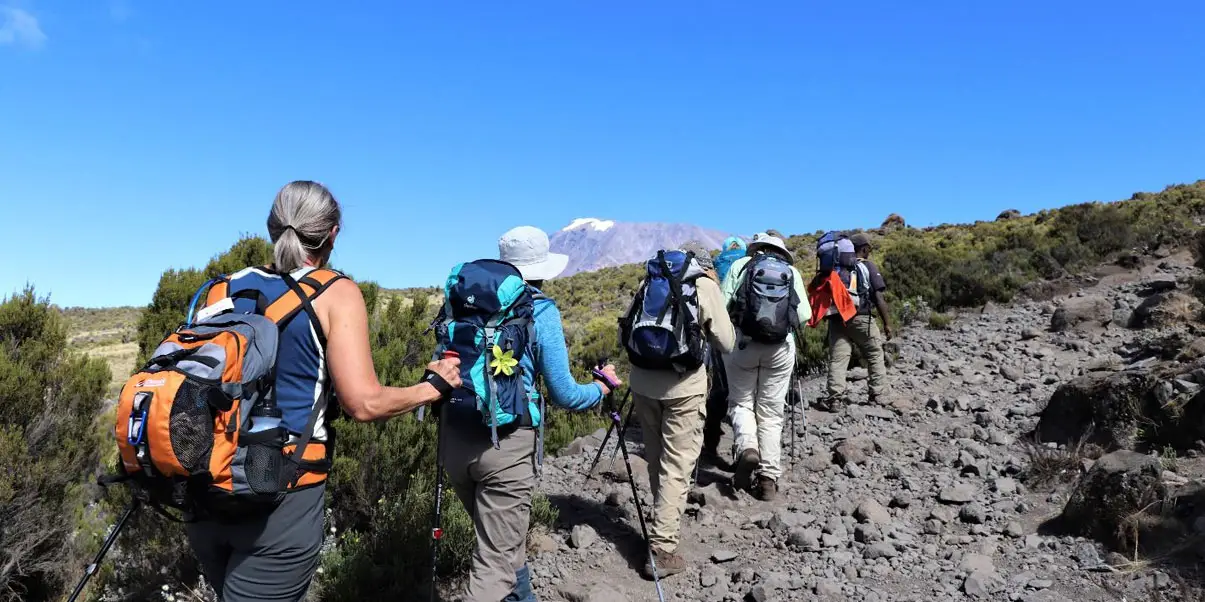
Umbwe Route is not about reaching the summit - it's about proving you can handle Kilimanjaro's most demanding challenge. It's the route that separates weekend hikers from serious mountaineers.
The Umbwe Philosophy:
- "If you have to ask if you're ready, you're not ready"
- Challenge over comfort
- Suffering as part of the experience
- Accomplishment through adversity
Most Honest Advice: Unless you're already an experienced high-altitude climber looking for the ultimate Kilimanjaro challenge, choose a different route. Umbwe doesn't just test your limits - it breaks most people who attempt it.
If you're considering Umbwe, ask yourself: "Have I successfully climbed technical peaks above 4,500m before?" If the answer is no, choose Machame, Lemosho, or Northern Circuit instead. Your summit chances and safety will be much better, and you'll still have an incredible Kilimanjaro experience.
Umbwe is for the 1% of climbers who've already conquered other mountains and need Kilimanjaro's ultimate test!
Factors to Consider When Choosing Your Route
Physical Fitness Level
- Beginner: Lemosho, Machame, or Rongai
- Intermediate: Any route except Umbwe
- Advanced: Any route including Umbwe
Time Available
- 5-6 days: Marangu
- 6-7 days: Machame, Rongai, Shira, Umbwe
- 7-8 days: Lemosho
- 9 days: Northern Circuit
Budget Considerations
Routes ranked by typical cost (lowest to highest):
- Marangu
- Machame
- Rongai/Umbwe
- Lemosho
- Northern Circuit
Accommodation Preference
- Camping: All routes except Marangu
- Huts: Marangu only
Scenery Priorities
- Most scenic: Lemosho, Northern Circuit
- Varied landscapes: Machame
- Unique perspectives: Rongai
Best Times to Climb
Dry Seasons (Recommended):
- January to March
- June to October
Wet Seasons (Not recommended):
- April to May (long rains)
- November to December (short rains)
Essential Preparation Tips
Physical Training
- Start training 3-6 months before your climb
- Focus on cardiovascular fitness and leg strength
- Include hiking with a weighted backpack
- Practice walking on uneven terrain
Gear Essentials
- Quality hiking boots (broken in)
- Layered clothing system
- Sleeping bag rated for -10°C (14°F)
- Trekking poles
- Headlamp with extra batteries
- Water purification tablets
Altitude Preparation
- Consider arriving in Tanzania 2-3 days early
- Stay hydrated throughout the climb
- Follow the "pole pole" (slowly slowly) philosophy
- Listen to your guide's advice
You can find the full Training guide for Kilimanjaro here
Conclusion
The "best" Kilimanjaro route depends on your individual circumstances, but for most climbers, the Lemosho Route offers the optimal combination of high success rate, stunning scenery, and good acclimatization. If budget is a concern, the Machame Route provides excellent value with nearly comparable benefits.
For those with limited time, Marangu offers hut accommodation but comes with lower success rates. Adventure seekers with ample time should consider the Northern Circuit for the ultimate Kilimanjaro experience.
Remember, regardless of which route you choose, proper preparation, quality gear, and selecting a reputable tour operator because is not allowed to climb Kilimanjaro without a guide and you will have a great chance for a successful summit attempt. Your journey to the roof of Africa awaits!
Planning Your Kilimanjaro Adventure
Ready to choose your route? Research reputable local operators, compare packages, and start your physical training. The mountain that Hemingway called "as wide as all the world, great, high, and unbelievably white" is waiting for you.
Best Route for Kilimanjaro FAQs
What is the best route to climb Kilimanjaro for first-timers?
The Lemosho Route is often considered the best for first-timers. It offers great acclimatization, scenic views, and a high summit success rate with lower crowd levels.
Which Kilimanjaro route has the highest success rate?
The Northern Circuit Route has the highest summit success rate due to its long duration, gentle elevation gain, and excellent acclimatization opportunities.
What is the easiest route to climb Kilimanjaro?
While no route is truly “easy,” the Rongai Route is considered one of the easiest due to its gradual slope, dry conditions, and fewer crowds.
What is the most scenic Kilimanjaro route?
The Lemosho and Machame Routes are widely regarded as the most scenic routes, featuring dramatic landscapes, rainforests, moorlands, and sweeping mountain views.
Which Kilimanjaro route is best during the rainy season?
The Rongai Route is the best route during the rainy season since it approaches Kilimanjaro from the drier northern side, reducing the chance of heavy rainfall.
What is the shortest route to climb Kilimanjaro?
The Marangu and Umbwe Routes are the shortest, typically taking 5–6 days. However, their fast ascent increases the risk of altitude sickness and lowers success rates.
Which Kilimanjaro route is the least crowded?
The Northern Circuit and Umbwe Routes are the least crowded. The Northern Circuit offers solitude with gradual ascent, while Umbwe is steep and for experienced climbers.
Can I climb Kilimanjaro without camping?
Yes, the Marangu Route is the only Kilimanjaro route with hut accommodations, making it the best choice for climbers who prefer not to camp.
How long does it take to climb Kilimanjaro on each route?
Depending on the route, the climb takes between 5 and 9 days. Longer routes like the Northern Circuit offer better acclimatization and higher summit success.
What is the most budget-friendly Kilimanjaro route?
The Marangu Route is typically the most affordable, thanks to hut accommodation and a shorter itinerary, though it has a lower success rate compared to longer routes.


